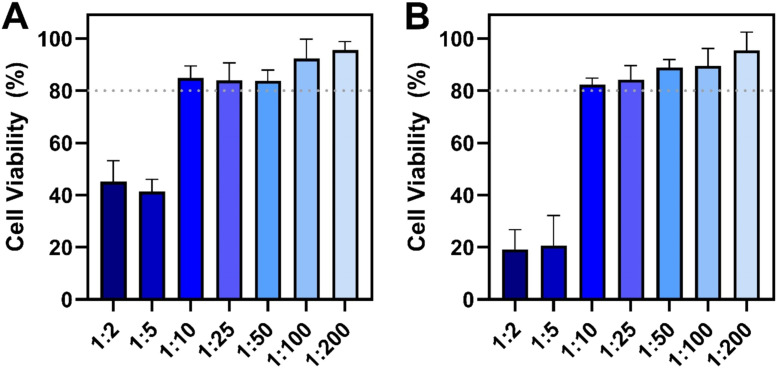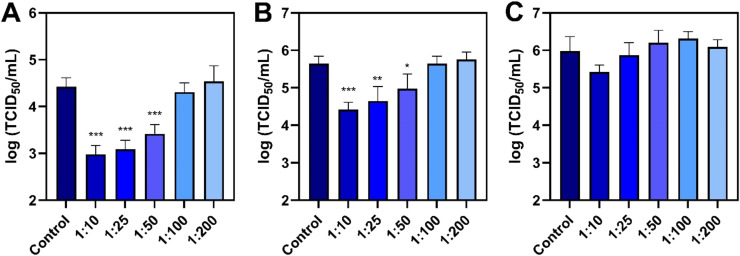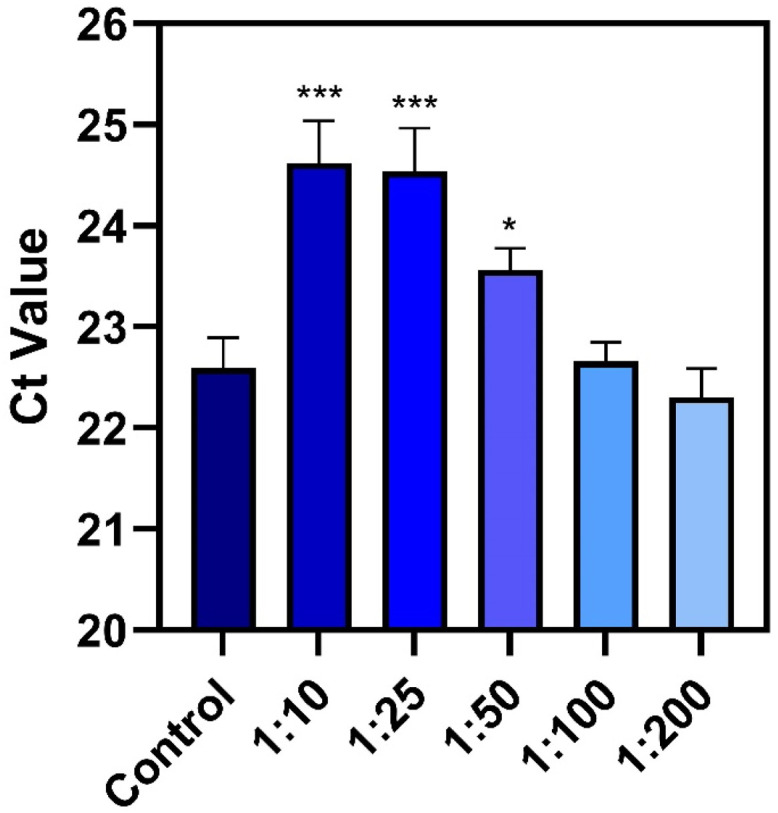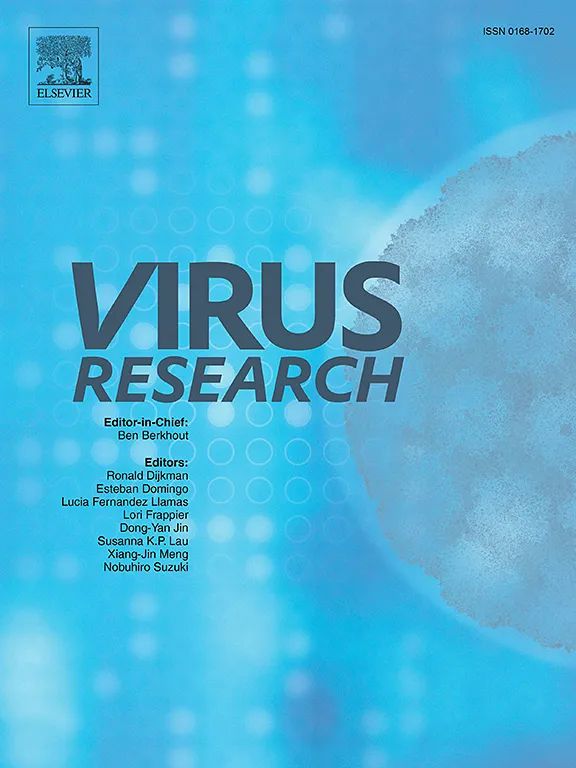水分散抗微生物脂质混合物抑制非洲猪瘟病毒和其他包膜病毒的研制。
IF 2.7
4区 医学
Q3 VIROLOGY
引用次数: 0
摘要
中链抗菌脂类是抑制膜包膜病毒如非洲猪瘟病毒(ASFV)和甲型流感病毒(IAV)在畜牧业中的应用前景广阔的抗病毒药物。然而,由于水溶性低,目前的用途仅限于饲料病原体缓解,需要开发水分散脂质配方以获得更广泛的应用。在这项研究中,我们报道了一种水分散的单甘油酯和乳酸酯的抗菌脂质混合物,它可以抑制ASFV和IAV,并在饮用水和饲料基质中表现出抗病毒特性。脂质混合物在水溶液中呈剂量依赖性地降低了膜包膜ASFV和IAV的病毒感染性,但对非包膜脑心肌炎病毒(EMCV)无活性。另外的ASFV实验支持脂质混合物具有病毒毒性,聚合酶链反应(PCR)实验证实了这一点。饲料缓解实验表明,脂质混合物还可以抑制ASFV的传染性,并影响病毒添加饲料中ASFV p72结构蛋白的构象特性。机制实验发现,脂质混合物以胶束依赖的方式迅速破坏磷脂膜,这与病毒学数据一致,而杀死病毒的活性需要更高的浓度,而不是膜破坏的开始。这些发现支持水分散的抗菌脂质混合物可以有效抑制ASFV和IAV,与现有的中链抗菌脂质缓解剂相比,在饮用水应用中具有实际优势,这些中链抗菌脂质缓解剂被配制成干粉或油,用于饲料应用。本文章由计算机程序翻译,如有差异,请以英文原文为准。



Development of a water-dispersible antimicrobial lipid mixture to inhibit African swine fever virus and other enveloped viruses
Medium-chain antimicrobial lipids are promising antiviral agents to inhibit membrane-enveloped viruses such as African swine fever virus (ASFV) and influenza A virus (IAV) in livestock applications. However, current uses are limited to feed pathogen mitigation due to low aqueous solubility and the development of water-dispersible lipid formulations is needed for broader application usage. In this study, we report a water-dispersible antimicrobial lipid mixture of monoglycerides and lactylates that can inhibit ASFV and IAV and exhibits antiviral properties in drinking water and feed matrices. The lipid mixture reduced the viral infectivity of membrane-enveloped ASFV and IAV in aqueous solution in a dose-dependent manner but was inactive against non-enveloped encephalomyocarditis virus (EMCV). Additional ASFV experiments supported that the lipid mixture is virucidal, which was corroborated by polymerase chain reaction (PCR) experiments. Feed mitigation experiments demonstrated that the lipid mixture can also inhibit ASFV infectivity and affected the conformational properties of ASFV p72 structural protein in virus-spiked feed. Mechanistic experiments identified that the lipid mixture rapidly disrupted phospholipid membranes in a micelle-dependent manner, which aligns with the virological data while higher concentrations were needed for virucidal activity than for the onset of membrane disruption. These findings support that water-dispersible antimicrobial lipid mixtures can effectively inhibit ASFV and IAV and have practical advantages for drinking water applications compared to existing medium-chain antimicrobial lipid mitigant options that are formulated as dry powders or oils for in-feed applications.
求助全文
通过发布文献求助,成功后即可免费获取论文全文。
去求助
来源期刊

Virus research
医学-病毒学
CiteScore
9.50
自引率
2.00%
发文量
239
审稿时长
43 days
期刊介绍:
Virus Research provides a means of fast publication for original papers on fundamental research in virology. Contributions on new developments concerning virus structure, replication, pathogenesis and evolution are encouraged. These include reports describing virus morphology, the function and antigenic analysis of virus structural components, virus genome structure and expression, analysis on virus replication processes, virus evolution in connection with antiviral interventions, effects of viruses on their host cells, particularly on the immune system, and the pathogenesis of virus infections, including oncogene activation and transduction.
 求助内容:
求助内容: 应助结果提醒方式:
应助结果提醒方式:


